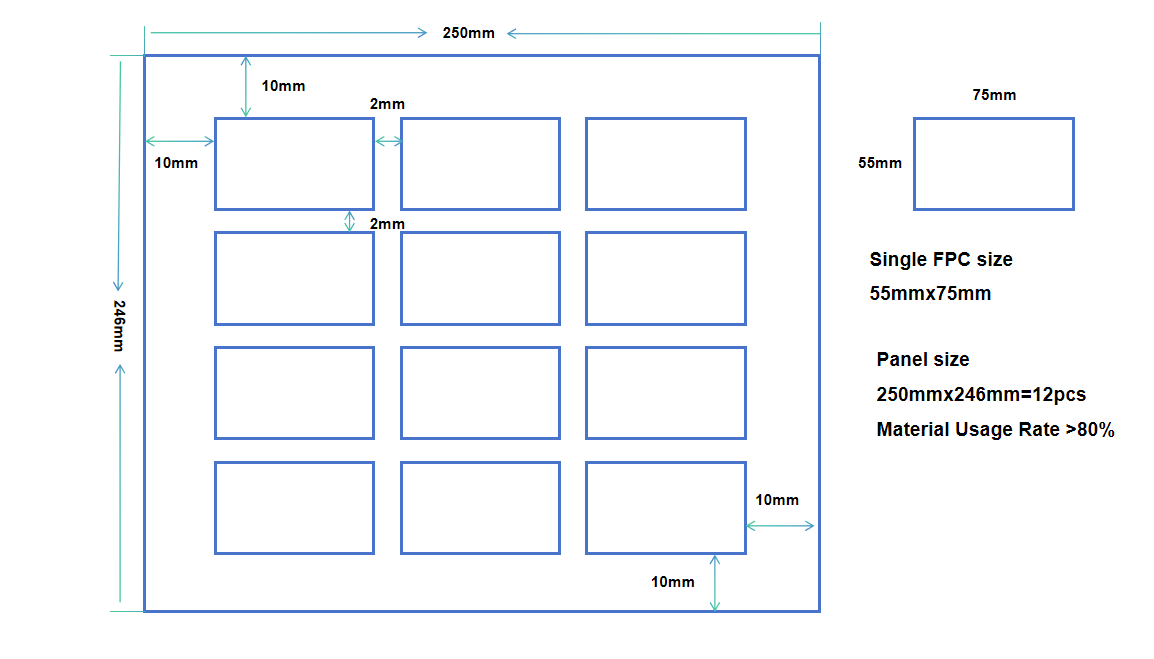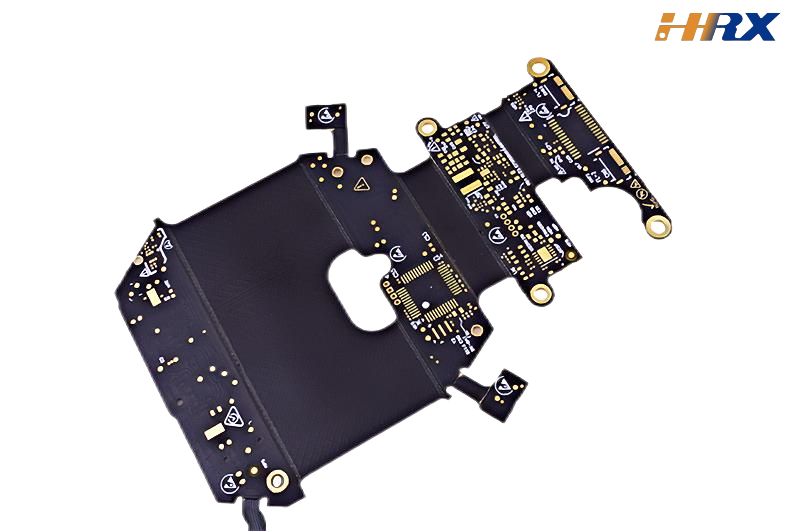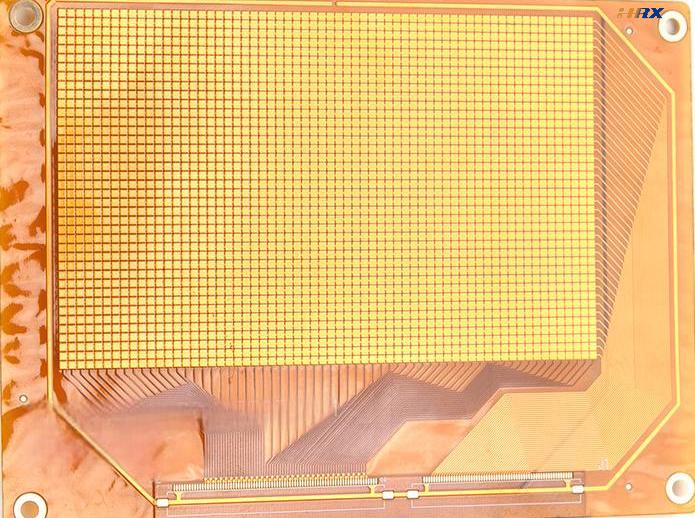Search
Understanding FPC Panelization Usage Rate
- Mar 28,2024
-
Share
In the manufacturing of flex PCB, one of the earliest challenges faced is working with roll materials. These materials are usually supplied in reels that are 100 meters long and come in two standard widths: 250mm and 500mm. But how does this roll material get converted into the FPC that powers modern devices? The answer lies in a critical early process—panelization—which ensures that material usage is optimized, and waste is minimized.
Roll Material Preparation in FPC Production
FPC manufacturing begins with roll materials, which are efficiently packaged in reels. While the material widths are set at 250mm and 500mm, the lengths can run up to 100 meters. But in practical production, these rolls cannot be used as-is. Once the roll material enters production, the first step is cutting it into sheets. This process, called "cutting material," forms the foundation for the entire production flow.
Why not continue using the roll? The main reason lies in the processes that follow, such as surface treatments, printing, and testing, all of which have specific dimensional constraints. Therefore, to move forward with these processes, FPC manufacturers need to predefine the sheet sizes that best fit the upcoming operations.
Panelization: A Crucial Step for Cost-Effective Manufacturing
Panelization is a vital step in FPC manufacturing. It refers to the process of arranging multiple FPC units on a single sheet of material to make the most efficient use of the available space. This is where engineers come into play. Before production begins, they meticulously design panel layouts based on the product’s shape, size, and material dimensions. Their goal? Maximize the material’s efficiency while minimizing the cost.
Panelization also helps during the quotation stage. Manufacturers can estimate how much material will be used based on the layout, which factors directly into the pricing. So, not only does panelization save material, but it also allows customers to get accurate quotes early in the process.

Example of Panelization for FPCs
Let’s take an example of an FPC with dimensions of 55mm x 75mm. This is a relatively small FPC, and the panelization can be highly efficient. Engineers will take the 75mm side and panel it along the 250mm wide material. To fit three pieces, the calculation is simple: 75mm×3+4mm gap+20mm panel edge=249mm
This setup leaves only 1mm of unused space on the 250mm width, achieving an impressive level of material utilization. On the 55mm side, engineers will work within a length of 200mm to 300mm, adjusting the panel to fit as many pieces as possible.
By maintaining a gap of at least 2mm between FPCs and ensuring a 10mm panel edge, the design becomes efficient while still allowing room for production processes like routing and testing.
Panelization for Different FPC Dimensions
Now, let’s look at a larger FPC, with dimensions of 65mm x 100mm. This size change drastically affects the panelization efficiency. On a 250mm wide material, this panelization would look like this: 65mm×3+4mm gap+20mm panel edge=219mm
In this case, only 6 FPCs would fit on the 250mm x 219mm sheet, resulting in a material efficiency of just 70%. While this layout still makes effective use of the space, it illustrates how larger FPCs can lead to lower material usage and increased production costs.
Panelization is a crucial step in optimizing material usage and reducing production costs in FPC manufacturing. By working closely with engineers to design the best panel layout, manufacturers can ensure that material is used as efficiently as possible, resulting in cost savings for both the producer and the customer. Understanding how panelization works and planning for it early in the process is essential for anyone involved in FPC design and production.

Let’s talk! We’ll provide the perfect solution for you!
-
 Huaruixin Electronics mainly produces printed circuit boards as the core business, to provide customers with one-stop solutions for FPC/PCB production, components sourcing and Assembly.
Huaruixin Electronics mainly produces printed circuit boards as the core business, to provide customers with one-stop solutions for FPC/PCB production, components sourcing and Assembly. - WHAT WE DO — PCB Design Solutions — Flex PCB Production — Components Sourcing — FPC&PCB Assembly
- PRODUCTS — Single Sided Flexible Circuits — Double Sided Flexible Circuits — Multilayer Flexible Cirucits — Rigid-Flex Circuits — FPC Assembly — PCB Assembly
- CAPABILITY — FPC Capability — Rigid-Flex Capability — PCB Capability — Assembly Capability
- Copyright © 2024 Shenzhen Huaruixin Electronics Co., Ltd. All Rights Reserved.
- Design By BONTOP


